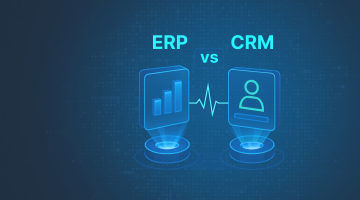
What is multi-cloud architecture: Pros and cons of this solution
Companies increasingly shift their applications, data, and infrastructure from traditional on-premises data centers and servers to the cloud. By harnessing the potential of the cloud, you can fuel your organization’s growth, break free from conventional business constraints, enhance your security measures, and maintain agility and competitiveness in today’s dynamic and ever-changing digital landscape.
But what is cloud transformation all about?
Cloud transformation is the process of migrating your workflows to the cloud, which offers numerous business benefits, including improved operations, increased profitability, and enhanced resilience. It usually involves moving all data and software to the cloud, while some companies rebuild their entire IT infrastructure to stay up to date.
The complexity of cloud transformation varies depending on your business goals. It also depends on whether you want a hybrid office/cloud setup or already have cloud-native infrastructure or applications.
No matter the specifics, the main objective of cloud transformation is to leverage up-to-date technology for flexible and scalable business growth while adapting to ever-evolving security threats and digital market trends.
Is cloud transformation really that important nowadays?
In today’s digital-first landscape, cloud transformation has become a vital component of overall digital transformation for businesses aiming to stay competitive. A survey conducted by LogicMonitor revealed that 87% of IT decision-makers acknowledged that the COVID-19 pandemic expedited their plans for migrating to the cloud.
Furthermore, according to a report by MarketsandMarkets, the market size of cloud technology is projected to reach $1,240.9 billion by 2027.
Related article:
A brief guide to effective cloud transformation from experts
Cloud transformation benefits
The benefits of cloud transformation are numerous and can significantly enhance business operations.
Key advantages of cloud transformation include the following:
- Future-proof business practices: Cloud technology enables organizations to leverage cutting-edge tech and approaches, like AI and Data Analytics. Regular updates and upgrades granted by cloud service providers ensure that the technology remains current, allowing businesses to maintain a competitive edge.
- Increased efficiency: Cloud transformation improves speed and agility in business operations. Processes can be automated, and critical data can be quickly accessed within a cloud computing model. AI and data analytics enable automated analysis, providing a comprehensive organizational overview and facilitating faster decision-making.
- Reduced overhead costs: Adopting cloud transformation can lead to significant cost savings. Nucleus Research reports that organizations can achieve three times the return on investment compared to traditional on-premises setups. Cloud management allows for streamlined workflows and easier data and process management, and eliminates the need for additional IT staff, especially with public cloud platforms.
- Scalability: Cloud architecture provides scalability advantages by removing the limitations of physical, on-premises servers. Organizations can easily scale up to meet increased demands or scale down when resources are not needed or go unused.
- Flexible workflows: Cloud transformation enables access to organizational data and applications from multiple devices at once, such as smartphones or tablets, as long as proper user credentials are in place. This promotes flexible working arrangements, allowing employees and customers to stay connected and up-to-date, regardless of location.
- Improved security: Outsourcing security operations to a cloud service provider ensures comprehensive and continuous monitoring of potential threats. This helps protect businesses from data breaches and other security risks, relieving the burden on internal IT teams and allowing them to focus on core operations.
By embracing cloud transformation, organizations can leverage these benefits to optimize their operations, stay competitive, and adapt to the evolving digital landscape. Nowadays, multi-cloud transformation is one of the most widespread trends in the market.
Learn more about cloud migration:
Cloud migration: Strategies and best practices
Multi-cloud architecture made plain
Multi-cloud refers to using a combination of different cloud platforms, such as public, private, edge, and on-premises resources. It allows organizations to build, operate, access, and secure applications consistently across these cloud environments.
There are several reasons why businesses adopt multi-cloud strategies. It enables them to choose the best cloud for each application’s needs, modernize their apps faster, maintain control over their data, and support their distributed workforce.
With multi-cloud, organizations can run their workloads on any cloud they prefer, while ensuring consistent management, security, and seamless application migration. It helps businesses become more agile, reduce costs, and manage risks in their diverse IT landscape. Combining multiple clouds can further boost your organization’s IT agility and flexibility.
Alongside the multi-cloud approach, organizations employ poly-cloud and hybrid-cloud models to diversify their infrastructure utilization. Sometimes, these names are used interchangeably, although there is a considerable difference between them.
Unlike multi-cloud environments that rely on several public cloud facilities, hybrid cloud architecture includes a versatile mixture of services provided by public clouds, private clouds, and on-premises systems, thus combining the best capabilities of local and cloud computing.
Naturally, hybrid clouds offer a broader choice of vendors and their resources, as well as empower users with greater opportunities for cloud bursting and cost optimization. On the other hand, hybrid cloud environments are harder to orchestrate and manage. They require advanced cloud brokerage, extensive employment of virtual private networks and APIs, and additional data security mechanisms to provide the unified infrastructure’s efficient and safe operation.
The poly-cloud system is a comparatively recent development that represents further sophistication of hybrid cloud computing with granular distribution of workloads and separate functions across various providers. Poly-cloud environments are beneficial for large and complex applications that can rely, say, on servers from one vendor and AI capabilities from another to ensure their effective functioning and smooth performance.
A question arises: can hybrid be multi-cloud? As a rule, these two approaches are considered separate mechanisms, each suited best for a specific purpose. However, as our experience in cloud enablement services shows, modern organizations increasingly combine hybrid and multiple clouds, enjoying the best of the two worlds. The most typical instance of such a blend occurs when a company creates a private cloud for internal use and enriches it with capabilities (PaaS, SaaS, or IaaS) provided by multiple public environments to cater to its unique needs.
How does combining different cloud facilities benefit enterprises?
Benefits of multi-cloud architecture
Combining multiple clouds can further boost your organization’s IT agility and flexibility. Let’s explore some common advantages of employing multiple clouds.
Access to the top-shelf features
By utilizing multiple cloud vendors, you gain the freedom to select specific features and capabilities that optimize your cloud workloads. When picking a reliable provider, look for speed, performance, reliability, convenient location, and security requirements.
Avoiding dependency on a single vendor
A multi-cloud approach allows for fast deployment across various platforms. You’re not limited to a single provider, reducing the issues arising from being overly reliant on one cloud service. This flexibility lets you choose the most fitting solution for your business needs, minimizing data, interoperability, and cost concerns.
Cost efficiency
Running multiple cloud environments can help optimize your IT expenses. Public clouds typically have lower overhead costs, and you can scale your resources up or down as needed. By leveraging the best combination of pricing and performance across different providers, you can reduce your total cost of ownership (TCO). According to a report by Deloitte, businesses that adopt cloud technology can reduce IT spending by up to 25%.
Access to innovation
Cloud providers are continuously developing new technologies and services. With a multi-cloud strategy, you can take advantage of emerging technologies to enhance your own offerings, unrestricted by the limitations of a single provider.
Enhanced security and compliance
Implementing a multi-cloud strategy allows for the consistent deployment of workloads while maintaining security policies and compliance across different services, vendors, and environments.
Cloud organizations that embrace cloud-based security systems, such as single sign-on as a service and cloud access security brokers, tend to achieve greater success.
Read a related article:
Cloud-based application development: Benefits and challenges
Improved reliability and redundancy
Using multiple clouds mitigates the risk of a single point of failure, reducing the chance of unplanned downtime or outages. If one cloud experiences an issue, services can be routed to another functioning cloud, ensuring the continuity of your computing needs.
In summary, leveraging multiple cloud services offers the benefits of accessing the best features, avoiding vendor lock-in, cost efficiency, innovation, enhanced security, and increased reliability and redundancy.
Need a cloud-based solution?
Check what we offer
Use cases
Multi-cloud use cases have become crucial for enterprises aiming to advance their digital transformation. Here are some key reasons why businesses are embracing multiple cloud platforms and services:
- Accelerating app transformation and delivery: Organizations deploy apps on public, private, and edge clouds based on their specific needs and business goals, replacing the previous Cloud First approach with Cloud Smart.
- Avoiding vendor lock-in and ensuring sovereignty: Concerns around total cloud expenditure, data control, vendor dependencies, and lock-in prompt enterprises to distribute their infrastructure across various cloud environments.
- Distributing applications and services to the edge: Industries like logistics, retail, and manufacturing require applications to be deployed closer to physical devices and users, facilitating automation, efficiency, and enhanced customer experiences.
- Supporting the distributed workforce: With distributed workforces becoming the new norm, enterprises face challenges related to securing and managing remote users and their devices. Enabling productivity from anywhere is a key aspect of the hybrid workforce model.
By leveraging multi-cloud strategies, organizations can effectively address these use cases and harness the benefits offered by diverse cloud environments.
Common challenges of adopting multi-cloud setup
In recent years, there has been a significant increase in the adoption of multi-cloud setups as organizations strive to leverage multiple cloud service providers to meet their various needs. While this approach offers several benefits, such as flexibility and redundancy, it also presents its fair share of challenges that need to be addressed. Here are some common challenges organizations face when implementing a multi-cloud setup.
Complexity and management issues
One of the key challenges with adopting a multi-cloud setup is dealing with complexity. Managing multiple cloud environments can quickly become overwhelming if not handled properly. Each cloud provider may have different interfaces, tools, APIs, and deployment models, which require specialized knowledge and expertise from IT teams.
Moreover, ensuring consistent performance across different clouds becomes challenging due to variations in each provider’s network latency or storage capabilities. Organizations must invest in robust monitoring systems that can simultaneously track performance metrics across all cloud environments.
To address these complexities effectively:
- Implement centralized management: Adopting an orchestration tool or platform with a unified interface for managing resources across multiple clouds can greatly simplify operations.
- Leverage automation: Automating provisioning processes using infrastructure-as-code (IaC) frameworks like Terraform or CloudFormation helps streamline resource deployments while reducing errors introduced manually.
- Invest in training: Providing adequate training opportunities for IT teams ensures they are equipped with the necessary skills to manage diverse cloud environments efficiently.
Security concerns
When working with multiple public clouds concurrently, security becomes paramount since sensitive data resides on various platforms outside an organization’s direct control. Ensuring consistent security policies across different providers can be challenging due to differences in native security features and configurations.
Organizations need strategies that focus on:
- Standardized security controls: Establishing standardized policies regarding access controls, encryption standards, and threat detection mechanisms helps maintain uniform levels of protection regardless of the underlying vendor technology.
- Centralized identity and access management (IAM): Adopting a centralized IAM system allows organizations to manage user identities, permissions, and authentication methods consistently across all cloud environments.
- Strengthening data protection: Implementing robust encryption mechanisms at rest and in transit ensures the confidentiality of sensitive information on multiple clouds.
Experiencing a lack of technical expertise and skills?
Connect with a professional team to address your project challenges.
Cost optimization
While multi-cloud setups offer flexibility, they can also lead to increased complexity in managing costs. Each cloud provider has its own pricing models with variations in compute instance types, storage tiers, and network bandwidths, resulting in different cost structures.
To optimize costs:
- Monitor resource usage: Use the monitoring tools provided by each cloud vendor or consider third-party solutions that aggregate this data for better visibility into resource utilization patterns.
- Leverage reserved instances or savings plans: Many providers offer discounted rates for long-term commitments. Identifying workloads suitable for reserved instances helps reduce expenses significantly over time.
- Regularly review contracts and billing statements: Conduct regular audits of contracts with vendors to ensure accurate invoicing based on agreed-upon terms.
Skill gaps and organizational readiness
Adopting a multi-cloud setup requires IT teams to develop new skills specific to each provider’s offerings. This poses challenges as it may require additional training or hiring specialized personnel proficient in various platforms.
To address skill gaps:
- Conduct continuous learning programs: Encourage continuous professional development through certifications offered by leading public cloud service providers, such as AWS Certified Solutions Architect or Microsoft Azure Administrator Associate.
- Foster a knowledge-sharing culture: Establish internal forums where team members can share their experiences working with different clouds, promoting collaboration among peers who tackle similar challenges.
- Consider partnering with experts or consultants when necessary. Collaborating with external specialists who possess the required expertise can help temporarily bridge any skill gaps until internal resources are adequately trained.
Shadow IT risks
The term “shadow IT” refers to all forms of unauthorized use of multiple cloud environments by an organization’s personnel that are not supported or approved by the IT department. Sometimes, even the tech crew may be unaware of it. Typical cases of shadow IT include creating cloud workloads using personal accounts, leveraging productivity apps (such as Trello) or messaging platforms (like Zoom or WhatsApp) for work-related interactions, and employing Google Drive or other public cloud resources for enterprise data storage and sharing.
As a result, companies suffer from the lack of visibility and control over their cloud infrastructure, face data loss instances, experience attack surface expansion, which enhances cyber threats, and pave the way for system inefficiencies and workflow obstructions.
To mitigate shadow IT risks:
- Perform comprehensive audits: They will enable you to expose team needs across the organization.
- Use advanced tools to monitor cloud services delivered to your company. They will ensure complete transparency of multi-cloud deployments.
- Provide employee training: Your staff must understand the risks of using unauthorized software and follow proper protocols when provisioning different cloud services.
- Create a risk assessment framework: It should be a mission-critical element of your multicloud strategy and include security policies, compliance measures, cloud network management guidelines, and a disaster recovery plan.
Implementing a multi-cloud setup offers numerous benefits but comes along with several inherent complexities. By addressing these common challenges effectively through proper planning, automation, and investment in training and security measures, organizations can successfully navigate the multi-cloud landscape while reaping its advantages.
DICEUS provides cloud-manages services since 2011. Today, we are an official Google Cloud Partner and will be happy to help you with your project.
Explore our services
Strategies to overcome multi-cloud challenges
Strategies to overcome multi-cloud challenges are essential for businesses operating in a complex cloud environment. Multi-cloud, the use of multiple public and private clouds within an organization, offers numerous benefits but also presents unique challenges.
Let’s take a look at some practical strategies that can help organizations navigate these hurdles and optimize their multi-cloud deployments. From watching the security and selecting the right cloud provider to leveraging automation tools, let’s eliminate difficulties!

Prioritizing security
Security is essential to any IT infrastructure, but becomes even more critical in a multi-cloud environment where data traverses multiple platforms. We have prepared top tips on how to make your multi-cloud experience more secure.
Key security techniques you should go for when dealing with multi-cloud include:
- Implementing strong access controls: Establish strict access control policies governing user permissions within each cloud platform. Regularly review these policies to identify vulnerabilities or potential weaknesses.
- Using encryption effectively: Encrypt data at rest and in transit using industry-standard protocols like SSL/TLS encryption for network traffic and AES 256-bit encryption for stored data.
- Employ identity management solutions: Utilize centralized identity management systems such as single sign-on (SSO) with multifactor authentication (MFA). This ensures secure login processes across various clouds while reducing complexity for end-users.
- Monitoring continuously: Deploy comprehensive monitoring tools that provide real-time visibility into security events across all connected clouds, enabling prompt detection of anomalies or suspicious activities.
Adopting a cloud-native mindset
We recommend sticking to the following recommendations to fully harness the power of multi-cloud environments without compromising efficiency.
How to obtain a cloud-native mindset:
- Reskill your workforce: Make sure your team possesses the necessary skills required to handle diverse technologies from different vendors within various clouds; invest in training programs if needed.
- Standardize deployment practices: Develop standardized templates or scripts called Infrastructure-as-Code (IaC), which simultaneously enable consistent provisioning of resources on multiple clouds.
- Automate deployments: Embrace DevOps principles and automation tools to streamline the deployment process across clouds. This helps eliminate manual errors, reduces time-to-market, and increases scalability.
- Establish governance frameworks: Implement policies that define how applications should be built, deployed, monitored, and managed in a multi-cloud environment. Creating centralized repositories for documentation is also crucial.
Finding a reliable cloud service provider
Choosing the right cloud service provider (CSP) plays a vital role in ensuring seamless multi-cloud operations.
How to choose the right provider? Here are some hot tips:
- Evaluate compliance standards: Verify whether your CSP adheres to industry-specific regulations like GDPR or HIPAA. Assess their certifications, such as ISO 27001 or SOC 2 Type II, to ensure they follow best practices for security.
- Check vendor lock-in risks: Analyze each CSP’s proprietary technologies used within their platforms; assess whether these technologies can easily integrate with other providers’ offerings without significant modifications.
- Assess data transfer costs: Understand the pricing structures of different CSPs when it comes to transferring data between clouds. Evaluate potential charges associated with ingress/egress traffic before committing entirely.
- Review SLAs carefully: Thoroughly review Service Level Agreements (SLAs) offered by prospective CSPs. Pay attention to aspects like uptime guarantees, support responsiveness during incidents/problems resolution processes, etc.,
By following these strategies, organizations can effectively harness multiple cloud benefits while mitigating potential risks associated with managing diverse ecosystems.
To learn more about cloud transformation and migration, read our article “How to create a successful cloud migration plan for enterprises“
To sum up
Adopting a multi-cloud architecture brings numerous benefits, such as flexibility, scalability, and cost optimization. However, it also presents certain challenges organizations must address to ensure successful cloud transformation.
Organizations can effectively navigate the complexities of multi-cloud architecture by understanding these challenges and implementing appropriate strategies, such as thorough planning and evaluation of solutions. All to harness its full potential for their business growth in today’s digital landscape.
FAQ
What is a multi-cloud architecture?
Multi-cloud architectures include various enterprise IT resources deployed in the public cloud facilities owned by multiple cloud providers. Adopting such a cloud deployment model allows companies to avoid vendor lock-in, optimize expenditures, choose the most suitable cloud for each solution’s needs, upgrade their apps faster, and support a distributed workforce across the organization.
What are the 4 types of cloud architecture?
Opting for cloud-based services, enterprises can choose among Infrastructure as a Service (IaaS), that provides computing, storage, networking, and virtualization services; Platform as a Service (PaaS), that delivers cloud app development resources and tools; Software as a Service (SaaS), that offers ready-made cloud-native solutions; and Function as a Service (FaaS), also known as serverless computing model, that enables building apps as event-triggered functions.
What are the benefits of multi-cloud?
By onboarding the multi-cloud model, companies eliminate dependence on a single vendor, obtain cost-effective cloud services, select specific capabilities and features for each enterprise software piece, improve the flexibility and reliability of their infrastructure, enhance its security and regulatory compliance, ensure uninterrupted workflow continuity, and enjoy high availability of cutting-edge innovation offered by various vendors.
Is multi-cloud architecture secure for all applications?
Since by distributing workloads across various providers, users eliminate the risk of a single point of failure, the multi-cloud model is inherently safe. However, to ensure its problem-free performance, organizations should have a robust multi-cloud strategy in place. This document should envisage consistent security measures and policies across platforms as well as leverage advanced cloud security posture management (CSPM) tools.
What is the difference between multi-cloud and poly-cloud architecture?
While resorting to multi-cloud, companies administer the same workloads across various cloud service vendors, thus eliminating points of failure that a specific vendor may have. Leveraging poly-cloud, enterprises entrust certain workload parts or projects to the provider whose services prove the best for it (for instance, running ML apps on the Google Cloud platform but selecting Microsoft Azure for Office integrations).





